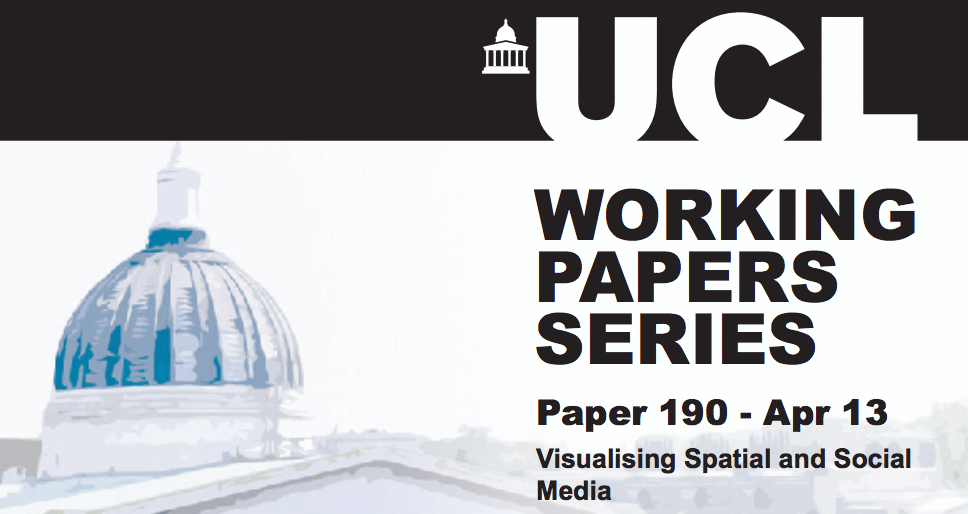Visualising Spatial and Social Media – Working Paper 190 from the Centre for Advanced Spatial Analysis
Visualising Spatial and Social Media – Working Paper 190 from the Centre for Advanced Spatial Analysis University College London is now available to download.
Authors – Michael Batty, Steven Gray, Andrew Hudson-Smith, Richard Milton, Oliver O’Brien and Flora Roumpani , Centre for Advanced Spatial Analysis, University College London.
Abstract
In this working paper we begin by surveying the development of computer graphics as it has influenced the development of the spatial representation of social and economic data, charting the history of computer cartography and geographic information systems (GIS) which have broadened into a wide array of forms for scientific visualisation. With the advent of the World Wide Web and the widespread adoption of graphical user interfaces (GUIs) to most kinds of computer device, visualisation has become central to most sciences and to the dissemination of many kinds of data and information. We divide our treatment of this domain according to three themes.
First we examine how the 2-dimensional map has become key to many kinds of spatial representation, showing how this software has moved from the desktop to the web as well as how 2-d has moved to 3-d in terms of the visualisation of maps.
Second, we explore how social data is being augmented by space-time series generated in real time and show how such real-time streaming of data presents problems and opportunities in which visualisation is key. We illustrate these new data for basic feeds from cities but then move to examine data from transit systems, social media, and data that is pulled from the crowd – crowdsourcing.
Finally we note the development of visual analytics showing how 2-d and 3-d spatial representations are essential to interpreting the outputs and the workings of more complex models and simulations.We conclude with the notion that much of what we develop in this chapter for the space-time domain is generic to the future representation of all kinds of social data.
View the full CASA working paper series – 190 working papers and counting…

